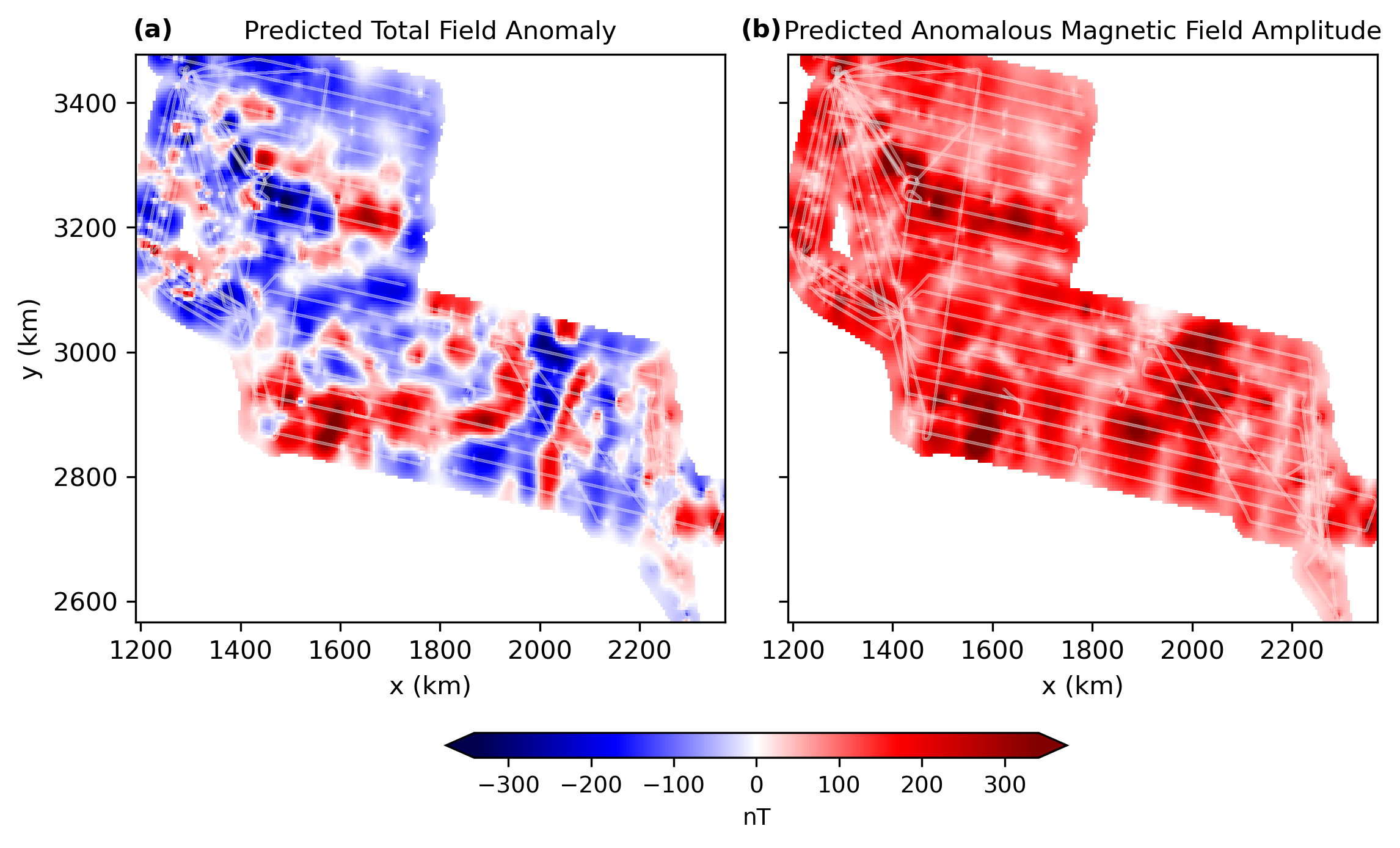A new equivalent sources approach for magnetic data
Published on 2025/09/23 by India Uppal.
Our new paper has been published in Geophysical Journal International! 🎉 It introduces Dual-Layer Magnetic Equivalent Sources, a new adaptation of the equivalent source technique for gridding magnetic data.
Uppal, I., Uieda, L., Oliveira Jr., V. C., Holme, R. (2025). Dual-Layer Gradient-Boosted Equivalent Sources for Magnetic Data. Geophysical Journal International. doi:10.1093/gji/ggaf359
We’re excited about this method because it addresses some of the limitations current adaptions of the equivalent source technique still have. This dual-layer approach enhances the computational efficiency and improves the predictions compared to a single layer approach when predicting both short- and long-wavelength signals, particularly in the presence of truncated long-wavelength anomalies. The method can also be used to fit total field anomaly data and then predict the three components of the anomalous magnetic field, as well as the amplitude of the anomalous magnetic field.
Open science: As always, all of the source code and data needed to reproduce our results are openly available and can be accessed via the:
- Github repository: compgeolab/eqs-magnetic-dual-layer
- Zendodo archive: 10.5281/zenodo.15120457
We’ll also be implementing a version of the dual-layer magnetic equivalent sources in the Python library Harmonica as well.
Here’s a sneak peek of one of our main results from applying dual-layer magnetic equivalent sources to an aeromagnetic dataset from Antarctica:

This work is part of my PhD thesis, motivated by our goal to improve the quality of existing Antarctic magnetic data products. Existing methods are often not ideal for stitching together such complex surveys and we saw equivalent sources as a promising way forward. With this paper, the results serve as the basis for further exploration into the challenging Antarctic magnetic datasets. This paper was completed with the help of my supervisors, Leo Uieda, Vanderlei C. Oliveira Jr. and Richard Holme.
Abstract
Magnetic data often require interpolation onto a regular grid at constant height before further analysis. A widely used approach for this is the equivalent sources technique, which has been adapted over time to improve its computational efficiency and accuracy of the predictions. However, many of these adaptations still face challenges, including border effects in the predictions or reliance on a stabilising parameter. To address these limitations, we introduce dual-layer gradient-boosted equivalent sources to: (1) use a dual-layer approach to improve the predictions of both short- and long-wavelength signals, as well as, reduce border effect; (2) use block-averaging and the gradient-boosted equivalent sources method to reduce the computational load; (3) apply block K-fold cross-validation to guide optimal parameter selection for the model. The proposed method was tested on both synthetic datasets and the ICEGRAV aeromagnetic dataset to evaluate the methods ability to interpolate and upward continue onto a regular grid, as well as predict the amplitude of the anomalous field from total-field anomaly data. The dual-layer approach proved better compared to the single-layer approach when predicting both short- and long-wavelength signals, particularly in the presence of truncated long-wavelength anomalies. The use of block-averaging and the gradient-boosting method enhances the computational efficiency, being able to grid over 400,000 data points in under 2 minutes on a moderate workstation computer.
